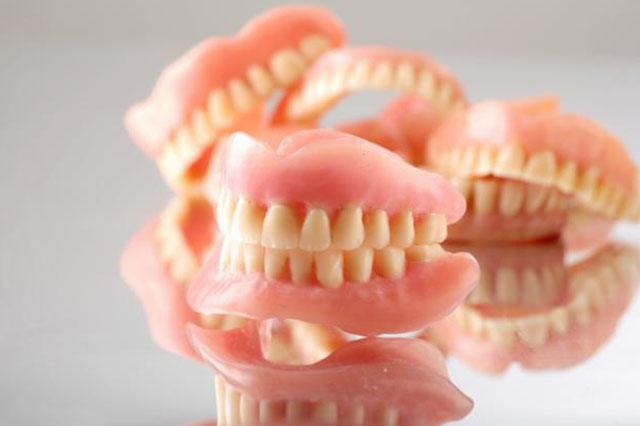Artificial teeth or dentures are the replacement for missing teeth and its surrounding tissues which are removable. There are two types of dentures which are available. One is complete dentures and the other one is partial dentures. Complete dentures are used when someone has lost all his/her teeth. On the other hand, partial dentures are a replacement for a few missing teeth.
Complete dentures can either be “immediate” or “conventional”. These are made after the remaining rotten or damaged teeth have been completely removed and the gum tissue has started to heal. This happens after a period of 8 to 12 weeks after the removal of teeth. Immediate dentures are quite different from that of conventional dentures. These are made in advance and are positioned immediately after the removal of teeth. As the result, the one who has to wear the artificial teeth does not have to be without teeth during the healing period. Partial dentures or bridge are replacement teeth attached to a gum-colored or a pink plastic base. At times this is connected by a metal framework which holds the dentures intact in the mouth. When there is one or more natural teeth remaining in the upper or lower jaw that is the time you need partial dentures.
How is the treatment done?
The process of denture development takes approximately three to six weeks and a number of appointments. As soon as your prosthodontist (a dentist who specializes in the replacement and restoration of teeth) or dentist determines the type of appliance that is best suited for you, the first step is to make various impressions of your jaw, so as to take measurements of the relation and space in between your jaws. The next step is to create wax forms, models, and plastic patterns in the precise shape and location of the denture to be prepared. You will have to try out this model multiple times and then there will be an assessment of the denture for shape, fit and colour before the casting of the final denture. After the whole assessment part is done and the denture is finally made, it needs to be cast in your mouth. Lastly, there will be some adjustments made, only if necessary. One or more teeth is replaced by a fixed bridge by positioning the crowns on the teeth on one side of the space and joining the artificial teeth to them. After this, the “bridge” is cemented into place. Artificial teeth not only fill the spaces made by the missing teeth, it prevents the teeth from changing its position too.

